11 Best Herbal Teas For Hyperpigmentation
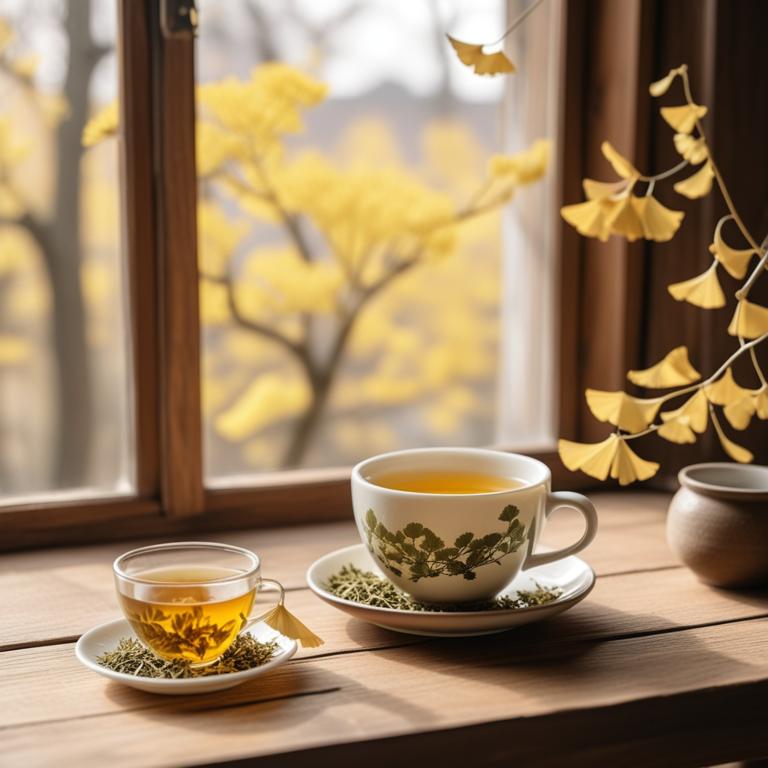
Herbal teas for hyperpigmentation are a type of natural remedy that utilizes various plant-based infusions to help reduce the appearance of dark spots and skin discoloration.
These teas are beneficial in treating hyperpigmentation as they contain antioxidants, anti-inflammatory properties, and natural skin-lightening agents that can help to brighten and even out the skin tone.
Some examples of herbal teas used to treat hyperpigmentation include licorice root tea, which contains glycyrrhizin that can inhibit the production of melanin; chamomile tea, which has anti-inflammatory properties that can soothe and calm the skin; turmeric tea, which contains curcumin that has potent antioxidant and anti-inflammatory properties; green tea, which contains catechins that can help to reduce melanin production; rosehip tea, which is rich in vitamin C and antioxidants that can help to brighten and even out the skin tone; and dandelion tea, which can help to detoxify and purify the skin.
By incorporating these herbal teas into one's skincare routine, individuals can enjoy a range of benefits, including improved skin texture, reduced appearance of dark spots, and a more even-toned complexion.
According to "Journal of cosmetic and laser therapy : official publication of the European Society for Laser Dermatology", teas for hyperpigmentation may be beneficial due to their herbal-derived compounds that are perceived to be milder, safer, and healthier than fully synthetic products, which can help improve skin lightness.
Below there's a list of the 11 best herbal teas for hyperpigmentation.
- 1. Curcuma longa teas
- 2. Aloe vera teas
- 3. Centella asiatica teas
- 4. Cassia auriculata teas
- 5. Terminalia chebula teas
- 6. Zingiber officinale teas
- 7. Ginkgo biloba teas
- 8. Terminalia arjuna teas
- 9. Cinnamomum zeylanicum teas
- 10. Piper nigrum teas
- 11. Camellia sinensis teas
Also you may be interested in...
TODAY'S FREE BOUNDLE
Herb Drying Checklist + Herbal Tea Shopping List + Medicinal Herbs Flashcards
Enter you best email address below to receive this bundle (3 product valued $19.95) for FREE + exclusive access to The Aphotecary Letter.
$19.95 -> $0.00
1. Curcuma longa teas
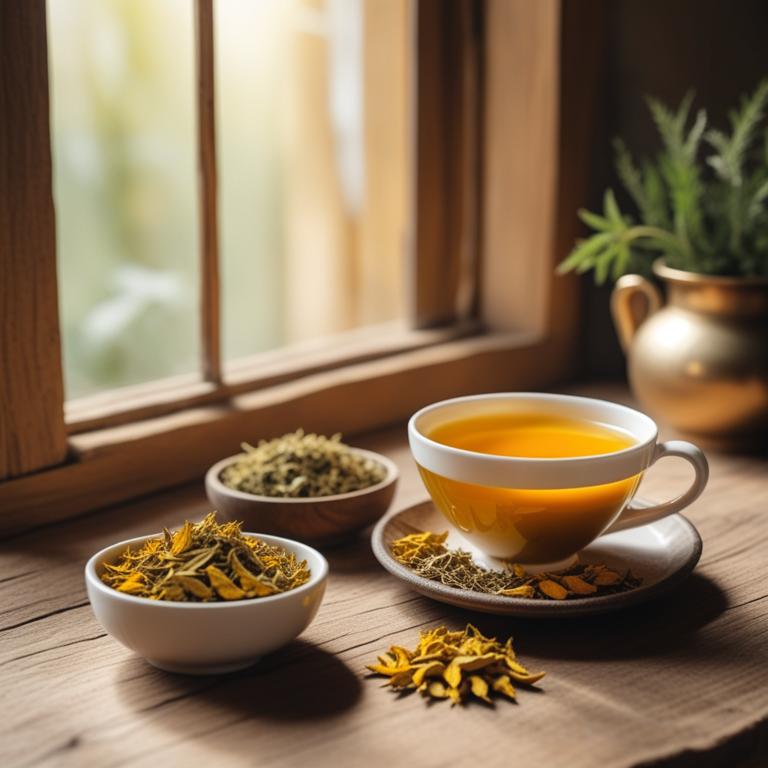
Curcuma longa teas, also known as turmeric tea, have been traditionally used to treat hyperpigmentation due to their potent anti-inflammatory and antioxidant properties.
The bioactive constituents present in Curcuma longa, such as curcumin, demethoxycurcumin, and bisdemethoxycurcumin, have been shown to inhibit the activity of tyrosinase, an enzyme responsible for the production of melanin, thereby reducing hyperpigmentation.
These bioactive constituents help to treat hyperpigmentation by reducing inflammation, scavenging free radicals, and inhibiting the melanogenesis pathway, resulting in a more even skin tone.
The benefits of using Curcuma longa teas to treat hyperpigmentation include its potential to reduce the appearance of dark spots, improve skin texture, and promote overall skin health.
Related Study
According to "Journal of integrative medicine", Curcuma longa teas for hyperpigmentation may be effective in reducing facial redness associated with conditions such as rosacea and photo damage, with a significant 40% decrease in redness observed in a study using polyherbal combination tablets.
2. Aloe vera teas

Aloe vera teas have been used for centuries to treat hyperpigmentation, a condition characterized by uneven skin tone and dark spots.
The soothing properties of aloe vera teas help to reduce inflammation and promote skin regeneration, allowing the skin to even out in tone and texture.
The bioactive constituents present in aloe vera teas, such as aloin, aloe-emodin, and vitamins A, C, and E, have potent antioxidant and anti-inflammatory effects, which help to lighten dark spots and promote skin cell turnover.
Regular consumption of aloe vera teas has been found to be beneficial in treating hyperpigmentation, as it helps to reduce melanin production, promote collagen synthesis, and improve skin elasticity.
3. Centella asiatica teas

Centella asiatica teas have been traditionally used to treat hyperpigmentation due to their anti-inflammatory, antioxidant, and tyrosinase-inhibiting properties, which help to reduce melanin production and promote even skin tone.
This herbal preparation is particularly effective in treating hyperpigmentation caused by sun damage, acne scars, and melasma.
The bioactive constituents of Centella asiatica teas, including asiatic acid, madecassic acid, and saponins, work synergistically to inhibit melanin production, reduce oxidative stress, and improve skin elasticity.
Regular consumption of Centella asiatica teas has been shown to improve skin texture, reduce the appearance of hyperpigmentation, and promote overall skin health.
4. Cassia auriculata teas
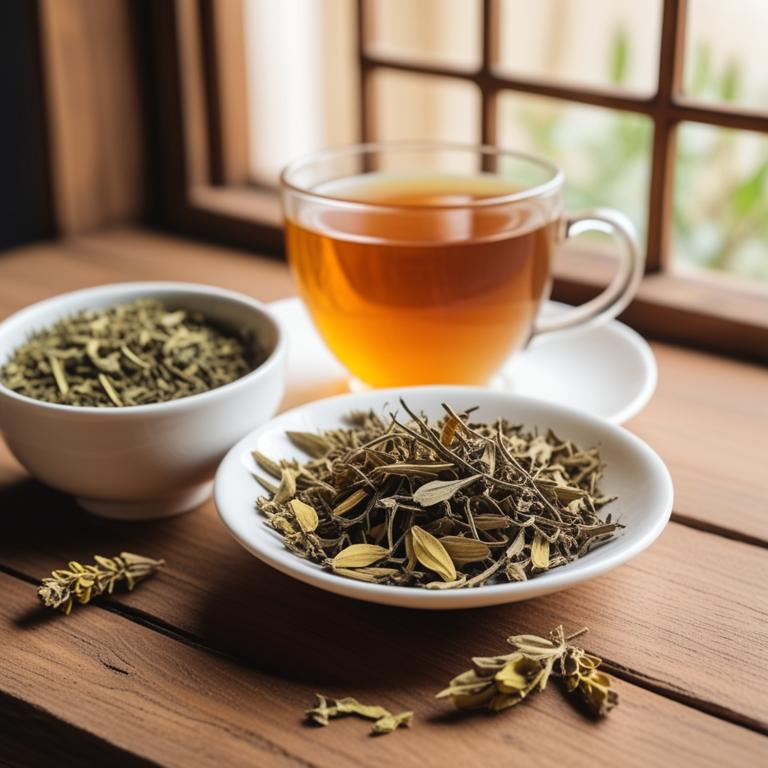
Cassia auriculata teas have been traditionally used to treat hyperpigmentation, a condition characterized by the darkening of skin due to excessive production of melanin.
The anti-inflammatory and antioxidant properties of Cassia auriculata teas help to reduce the production of melanin, thereby treating hyperpigmentation.
The bioactive constituents of Cassia auriculata teas, including flavonoids, phenolic acids, and saponins, play a crucial role in inhibiting the activity of tyrosinase, an enzyme responsible for melanin production.
Regular consumption of Cassia auriculata teas has been found to be beneficial in treating hyperpigmentation, as it not only reduces melanin production but also promotes skin regeneration and improves skin texture.
5. Terminalia chebula teas
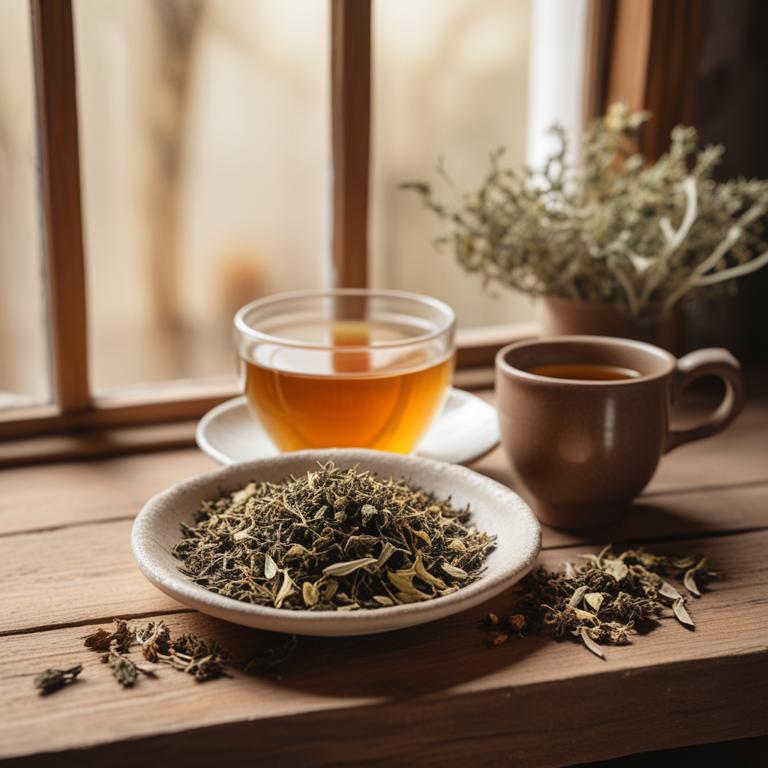
Terminalia chebula teas have been traditionally used to treat hyperpigmentation, a common skin condition characterized by uneven skin tone and dark spots.
The antioxidant properties of Terminalia chebula teas help to reduce oxidative stress and inflammation, which can contribute to the development of hyperpigmentation.
The bioactive constituents of Terminalia chebula teas, including chebulic acid, chebulinic acid, and flavonoids, have been shown to inhibit the activity of tyrosinase, an enzyme involved in melanin production, thereby reducing the appearance of dark spots.
Regular consumption of Terminalia chebula teas has been found to promote skin brightening, reduce melanin deposition, and improve overall skin health, making it a promising natural remedy for treating hyperpigmentation.
Related Study
According to "Journal of the Medical Association of Thailand = Chotmaihet thangphaet", Terminalia chebula teas for hyperpigmentation were not the subject of the study, however, the study found that an herbal extract, likely containing Terminalia chebula, was as effective as 0.1% tretinoin cream in treating striae alba (a type of hyperpigmentation), without causing skin irritation, which can be a drawback of tretinoin treatment.
6. Zingiber officinale teas
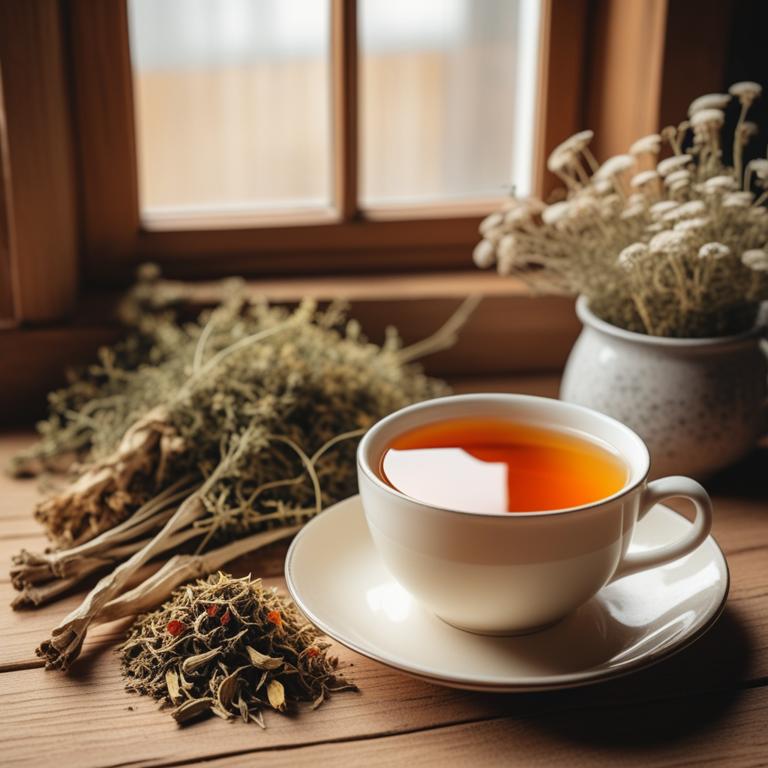
Zingiber officinale teas, derived from the rhizomes of ginger, have been traditionally used to treat hyperpigmentation due to their potent antioxidant, anti-inflammatory, and tyrosinase inhibitory properties.
The bioactive constituents, including gingerol and shogaol, help to reduce melanin production and inhibit the activity of tyrosinase, an enzyme responsible for melanin synthesis.
Regular consumption of Zingiber officinale teas has been found to reduce the appearance of hyperpigmentation, promoting even skin tone and complexion.
The benefits of using Zingiber officinale teas to treat hyperpigmentation include natural and non-invasive treatment options, with minimal side effects and no risk of long-term damage to the skin.
7. Ginkgo biloba teas

Ginkgo biloba teas have been traditionally used to treat hyperpigmentation, a condition characterized by uneven skin tone and dark spots.
The anti-inflammatory and antioxidant properties of ginkgo biloba help to reduce inflammation and prevent further damage to the skin, promoting even skin tone and fading of dark spots.
The bioactive constituents of ginkgo biloba, including flavonoids and terpenoids, work to inhibit the production of melanin, the pigment responsible for skin darkening, and also exhibit antioxidant and anti-inflammatory activities.
Regular consumption of ginkgo biloba teas may help to reduce the appearance of hyperpigmentation, resulting in more even and radiant skin tone.
8. Terminalia arjuna teas

Terminalia arjuna teas have been traditionally used to treat hyperpigmentation, a condition characterized by uneven skin tone and dark spots.
The anti-inflammatory and antioxidant properties of Terminalia arjuna teas help to reduce inflammation and oxidative stress, which can contribute to hyperpigmentation.
The bioactive constituents of Terminalia arjuna teas, including arjunolic acid, flavonoids, and saponins, have been shown to inhibit the activity of tyrosinase, an enzyme involved in the production of melanin, thereby reducing the appearance of hyperpigmentation.
Regular consumption of Terminalia arjuna teas has been found to improve skin complexion, reduce the appearance of dark spots, and promote overall skin health, making it a beneficial herbal remedy for treating hyperpigmentation.
9. Cinnamomum zeylanicum teas

Cinnamomum zeylanicum teas, derived from the bark of the Cinnamomum zeylanicum tree, have been traditionally used to treat hyperpigmentation due to their potent antioxidant and anti-inflammatory properties.
The bioactive constituents, such as cinnamaldehyde and eugenol, present in this herbal preparation help to inhibit the activity of tyrosinase, an enzyme responsible for melanin production, thereby reducing the appearance of hyperpigmentation.
Additionally, the tea's anti-inflammatory properties help to soothe and calm the skin, reducing redness and irritation associated with hyperpigmentation.
The benefits of using Cinnamomum zeylanicum teas to treat hyperpigmentation include reduced melanin production, improved skin tone, and a more even skin complexion, making it a promising natural remedy for this common skin condition.
10. Piper nigrum teas
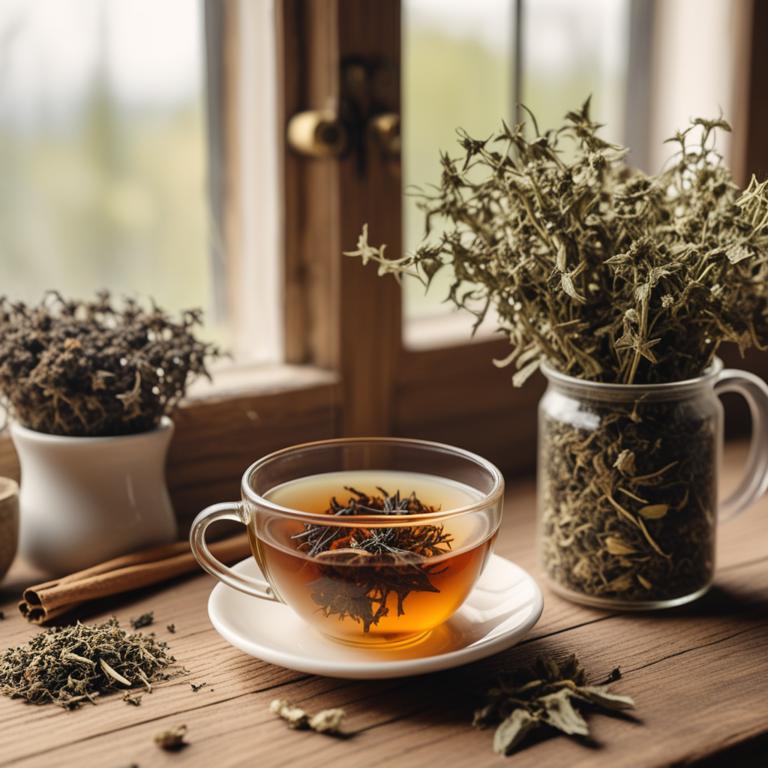
Piper nigrum teas, derived from the black pepper plant, have been traditionally used to treat hyperpigmentation due to their antioxidant and anti-inflammatory properties.
The bioactive constituents, including piperine and ferulic acid, help to inhibit the production of melanin, thereby reducing the appearance of hyperpigmentation.
The tea's ability to improve skin texture and reduce inflammation also contributes to its effectiveness in treating this condition.
By incorporating Piper nigrum teas into one's skincare routine, individuals can benefit from its potential to even out skin tone, reduce the appearance of dark spots, and promote overall skin health.
11. Camellia sinensis teas
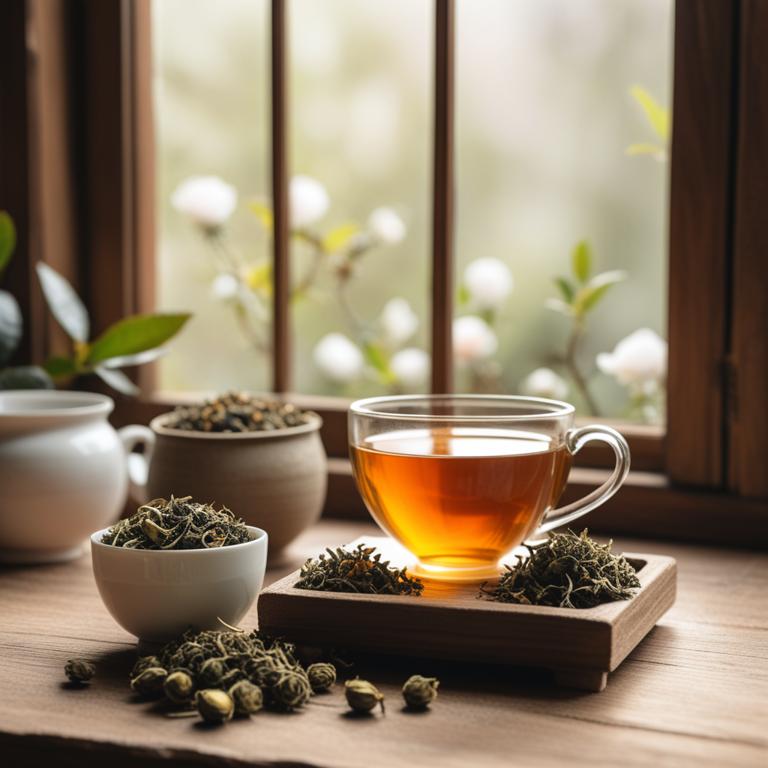
Camellia sinensis teas, a type of herbal preparation derived from the leaves of the Camellia sinensis plant, have been traditionally used to treat hyperpigmentation, a condition characterized by uneven skin pigmentation.
The polyphenolic compounds present in Camellia sinensis teas, such as theaflavins and thearubigins, help to inhibit the activity of melanin-producing enzymes, thereby reducing the appearance of hyperpigmentation.
These bioactive constituents also exhibit antioxidant and anti-inflammatory properties, which contribute to their skin-brightening effects.
Regular consumption of Camellia sinensis teas may help to improve skin texture and reduce the visibility of hyperpigmentation, making it a potential natural remedy for this common skin ailment.